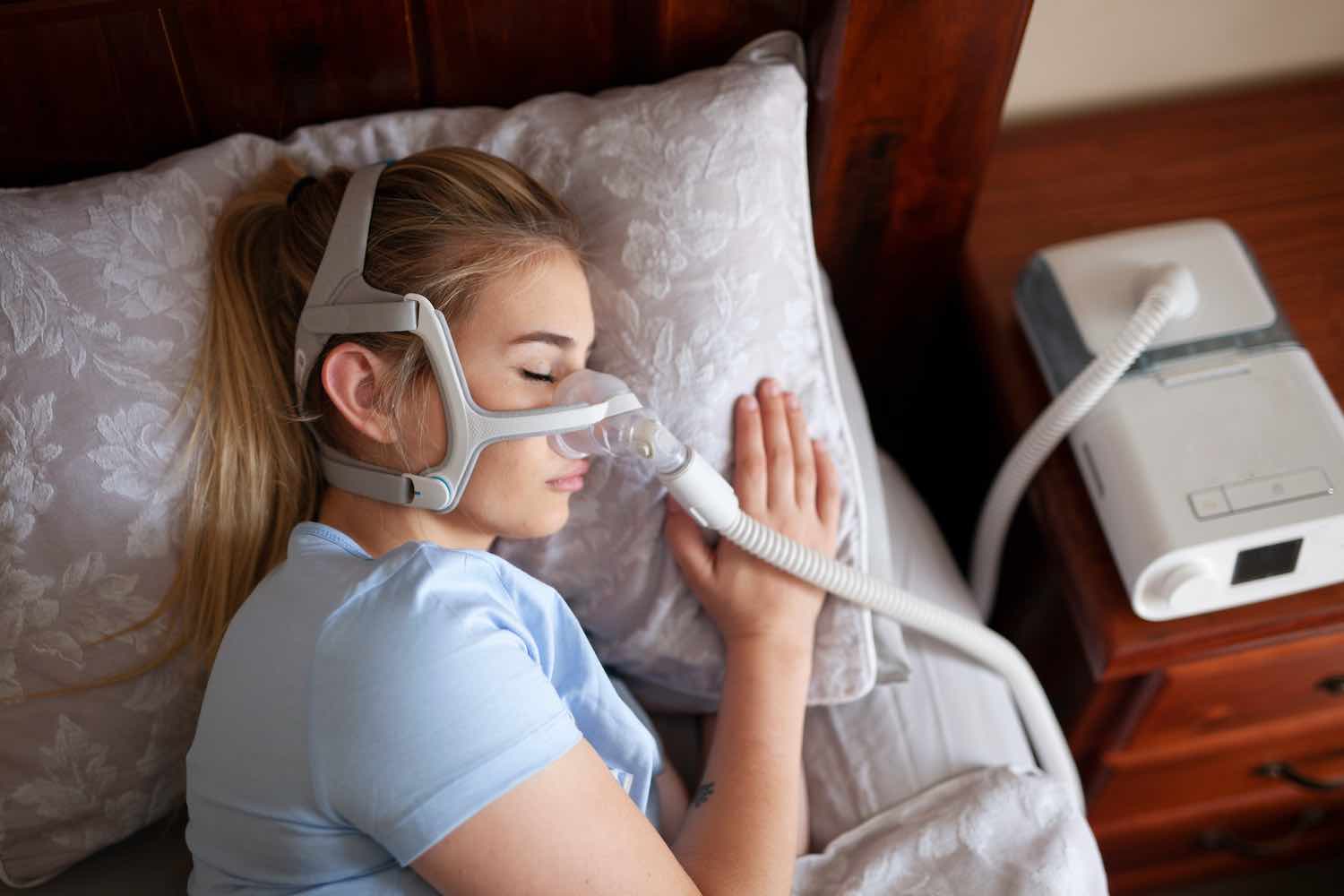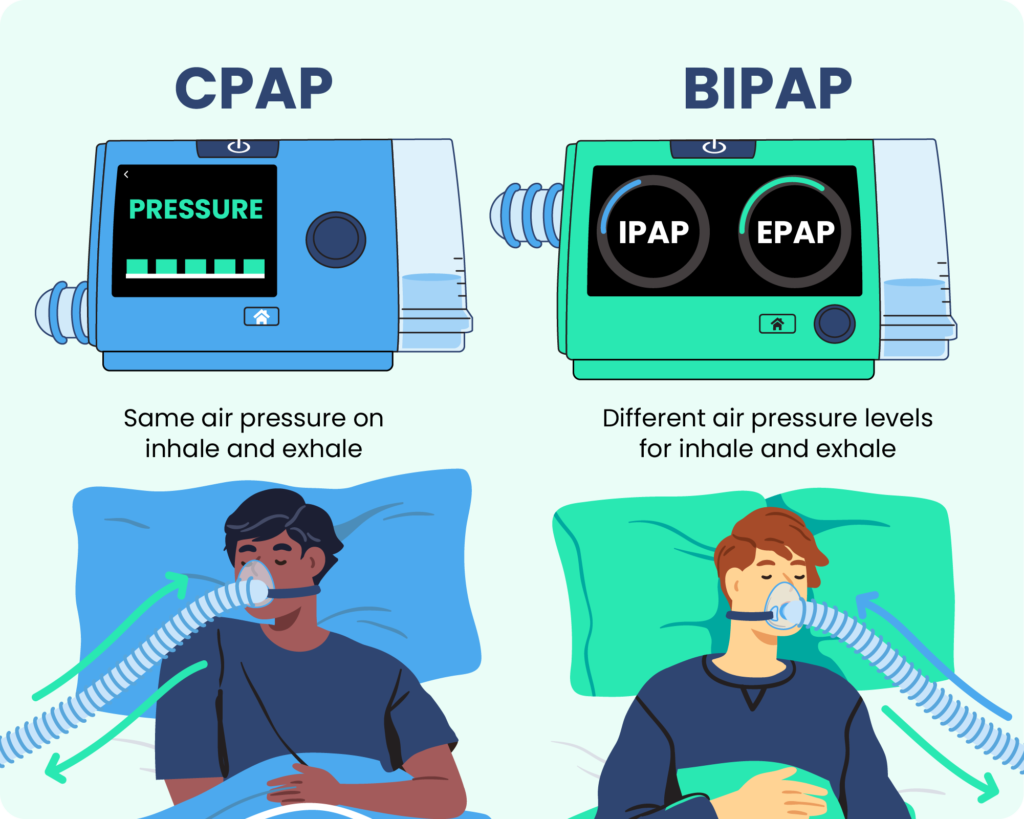BiPAP Rental: Easy Access to Advanced Respiratory Equipment
BiPAP Rental: Easy Access to Advanced Respiratory Equipment
Blog Article
Bipap vs. CPAP: Which Is the most effective for Your Sleep Disorder?
When navigating the intricacies of rest problems, the option in between BiPAP and CPAP therapy is a vital factor to consider. While CPAP provides a constant airflow suitable for obstructive rest apnea, BiPAP's twin stress setups might enhance convenience for those with even more intricate respiratory concerns.
Comprehending Sleep Disorders
Rest disorders incorporate a variety of conditions that interrupt typical sleep patterns, influencing both the quality and period of rest. These disorders can show up in different kinds, including sleeping disorders, sleep apnea, narcolepsy, troubled leg disorder, and parasomnias. Each condition presents distinct difficulties, often bring about considerable daytime fatigue, cognitive impairment, and psychological disruptions.
Sleep problems is characterized by trouble falling or remaining asleep, while sleep apnea entails repeated disturbances in breathing throughout sleep, usually causing fragmented remainder. Narcolepsy, on the other hand, is marked by too much daytime sleepiness and unexpected sleep attacks. Uneasy leg syndrome creates awkward feelings in the legs, prompting an unmanageable desire to relocate them, which can likewise impede the capability to drop asleep.
The effect of rest disorders extends beyond private health and wellness, affecting general performance, relationships, and lifestyle. Comprehending the details nature of each problem is critical for efficient medical diagnosis and treatment. As sleep health becomes increasingly recognized as an essential part of total health, addressing these conditions is important for enhancing both sleep top quality and daily performance.
Exactly How CPAP Functions
Continuous Favorable Air Passage Pressure (CPAP) treatment is regularly utilized as a main treatment for obstructive rest apnea (OSA) The mechanism of CPAP involves using a device that provides a steady stream of air via a mask used during sleep. This air movement maintains positive pressure in the airway, avoiding the collapse or blockage of the throat that can take place throughout sleep.
When a person takes in, the CPAP maker gives a continuous flow of air, ensuring that the airway remains open - BiPAP Rental. This not only eases the symptoms of OSA, such as snoring and disrupted sleep patterns, yet additionally lowers the associated health and wellness dangers, including cardio issues and daytime exhaustion
The stress settings on a CPAP device can be customized to satisfy specific person needs, usually figured out through a sleep research. Individuals usually undertake titration studies to locate the optimum pressure degree for their special problem. Regular follow-up and changes might be needed to make sure efficiency and convenience. Overall, CPAP therapy has been shown to significantly improve the quality of rest and total health for people dealing with obstructive rest apnea.
How BiPAP Works
BiPAP, or Bilevel Favorable Respiratory Tract Stress, is a customized kind of non-invasive air flow that is specifically advantageous for individuals with problems such as complicated sleep apnea or respiratory system conditions. Unlike CPAP, which supplies a continual stream of air at a single stress, BiPAP offers 2 unique stress setups: a higher inspiratory pressure additional resources for inhalation and a lower expiratory pressure for exhalation. This dual-pressure technique permits for easier breathing, decreasing the initiative required during exhalation.
The gadget runs through a mask fitted over the nose or mouth, attached to a device that produces air stress. When the person breathes in, the maker delivers the greater pressure to assist with air movement, guaranteeing that the respiratory tract continues to be open. Upon exhalation, the maker immediately decreases the stress, making it much more comfy for the person to take a breath out.

Trick Differences Between BiPAP and CPAP

In comparison, BiPAP (Bilevel Favorable Respiratory tract Pressure) offers two various pressure settings: one for inhalation and a lower one for exhalation. This dual stress system permits more comfy breathing, especially for people who deal with exhaling against a constant stress. BiPAP is often recommended for people with complex rest apnea, persistent obstructive lung disease (COPD), or those that need extra support throughout rest.
Furthermore, the intricacy of BiPAP devices typically causes a higher view it now cost and calls for more careful titration than CPAP. BiPAP Rental. Recognizing these vital differences can help in recognizing which device may be extra ideal for details sleep problems, establishing the groundwork for enlightened treatment decisions
Picking the Right Therapy
The choice between BiPAP and CPAP treatment largely pivots on the certain features of the rest disorder, the individual's general wellness, and their convenience with the gadget. CPAP, which supplies a continuous stream of air, is commonly suggested for obstructive rest apnea (OSA)
Alternatively, BiPAP offers 2 degrees of pressure: one for breathing and a lower one for exhalation. This twin pressure system is useful for individuals with complicated rest apnea or those who experience problem breathing out against a continual pressure. In addition, BiPAP is typically recommended for people with respiratory problems, such as persistent obstructive lung disease (COPD), where differing pressure setups can boost comfort and compliance.
Ultimately, an extensive evaluation by a sleep expert, consisting of a rest research, can aid determine which therapy straightens click for more info ideal with the person's demands. Variables such as comfort, convenience of use, and particular clinical conditions must additionally be taken into account to enhance therapy end results.
Verdict
In recap, both BiPAP and CPAP offer unique objectives in the monitoring of sleep disorders. CPAP is effective for obstructive rest apnea through regular air flow, while BiPAP provides dual pressure settings that enhance convenience for those with complicated sleep apnea or respiratory system issues. The selection in between these treatments must be assisted by individual demands and problems, demanding a thorough evaluation by a rest professional to make certain optimum therapy end results and enhanced quality of sleep.

Generally, CPAP treatment has been revealed to significantly enhance the high quality of sleep and general wellness for individuals enduring from obstructive rest apnea.
BiPAP is frequently suggested for individuals with intricate rest apnea, chronic obstructive pulmonary illness (COPD), or those that need extra assistance throughout rest.
CPAP is efficient for obstructive sleep apnea with constant air flow, while BiPAP offers dual pressure settings that boost comfort for those with complex sleep apnea or breathing concerns.
Report this page